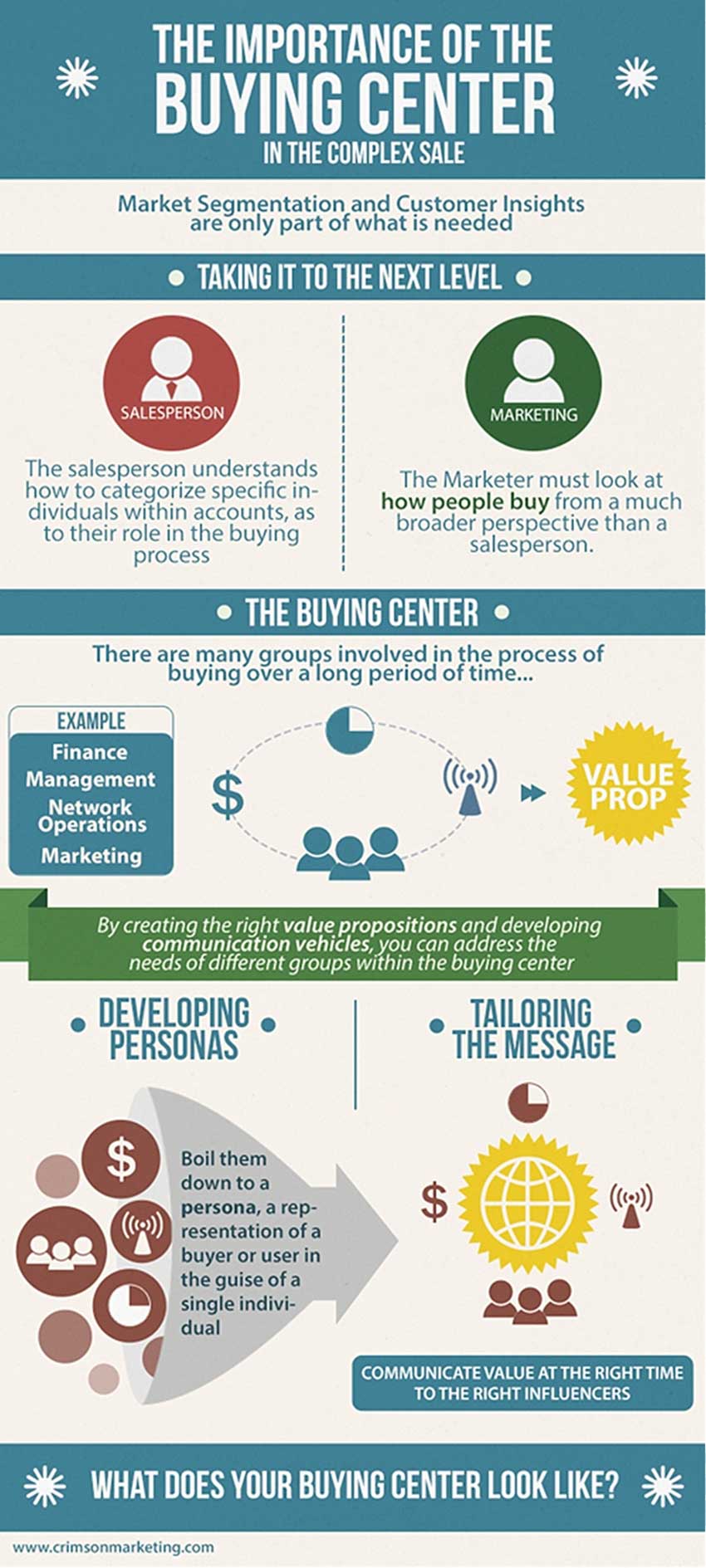As a marketer, you put a lot of effort into understanding your target market. You may hire top marketing firms to help you achieve clarity. You probably use market segmentation to understand where to focus, and you may even gain significant insights into that target market.
Those insights help you understand how to build the right products, develop a product positioning strategy, and fulfill the needs of that target market.
But market segmentation and customer insights are only part of what you need to enter the competitive market. Are you ready to take your efforts to the next level?
Understanding What Motivates a Buyer
A lot has been written about buyers from the perspective of a salesperson, but very little has been written from the marketing person's point of view.
The salesperson understands how to categorize specific people within accounts based on their role in the buying process, but identifying buyers is a more complex process for marketers. Marketers need even more information on how people buy, because a company must begin the marketing process even before those buyers know they have an itch to scratch.
The 'Buying Center'
Marketers need to start marketing to customers well before a potential buyer is ready to talk to a salesperson. The most effective way for the marketer to do so is to use the concept of the "buying center."
The buying center is an acknowledgment that, in the complex sale, many people are involved in the process of buying over a long period of time. The buying center also highlights the fact that different people have different roles, requirements, and desires as they relate to the solution being offered.
Let's use as an example a telecommunications company that needs to purchase software. We can assume that the buying center would be made up of four different groups:
- Senior management
- Finance
- Marketing
- Network operations
Each group has different requirements, and marketing broadly to all four groups would be a mistake. Instead, understanding what each group wants will help you craft your message for each:
- Management wants to protect quarterly earnings.
- Finance aims to reduce costs with the solution, as well as find an affordable vendor.
- Marketing strives to roll out new services and increase average revenue per customer.
- Network operations wants to keep the network up and running at all times.
The beauty of the buying center concept is that once you begin to understand what drives the different groups within a buying center, you can create the right value propositions and messaging to address the needs of different groups within the buying center.
Developing Personas
Once you've identified the departments that make up the buying center, it's time to develop different buyer personas. The persona is a representation of a buyer/user in the guise of a single person. It enables anyone in the company to understand exactly whom they're dealing with, and it ensures that everyone in the company has a consistent view of buyers.
Start by researching those buyers, not only to understand what is important to them but also to understand how they view other players in the competitive market, how they see you, and how they gather information to help them make decisions.
Let's go back to that telecommunications company. For network operations, you might create a persona called Technical Ted. He's the guy with lots of technical questions about the software. He cares less about price than Finance does, and he is more focused on understanding whether your software will be easy to implement and how much work will be required of him.
In Management, maybe you have Skittish Sal. She's anything but tech-savvy, and she needs a lot of hand-holding because she'd rather ask your salesperson questions than conduct research online. She wants to make sure she chooses the software solution that will help the company grow.
The Finance department might include Miserly Mitch, who shops solely on price and who is impervious to all the great reasons your product is worth paying more for. He wants to know about your solution's total cost of ownership (TCO).
And in Marketing, the buyer persona might be Benefits Betty, who wants to know that your product will make her company look good and stand out.
Once the personas are developed and mapped onto the buying process, then you can start communicating effectively with each group within the buying center.
Tailoring the Message
Once you have identified members of the buying center and developed the buyer personas, you can emphasize different value propositions and deliver them through various vehicles to each persona:
- Find the right channels. Each buyer persona will have preferences for where he or she receives messages. That might be blogs, social media, news sites, magazines, etc. Make sure you're using the appropriate channels for the personas you're trying to reach.
- Focus on the benefits to that person. Every member of the buying center wants to know what's in it for him or her. Speak to that in your messaging, and know that it will be different for each persona.
- Reinforce the message. Make sure you're delivering consistent messaging across all channels, and that you're not confusing anyone who visits your site, social profile, or blog by trying to be all things to all personas. Pick one for each post, update, or page, and speak to that persona only.
Applying those steps to the buyer personas we noted above, here's what the messaging might look like for each:
- Technical Ted. Build a client forum where he can learn how to maximize uptime and ensure his network is always up and running.
- Skittish Sal. Send her videos that address frequently asked questions, and initiate an email drip campaign that provides simple and useful content on how your solution will help the company move forward. Have a dedicated salesperson eager to help her.
- Miserly Mitch. Direct him to in-depth blog posts that talk about costs/benefits of your software, as well as ROI. Provide him with sophisticated economic analysis tools.
- Benefits Betty. Hold events where she can learn, hands on, how to help her company differentiate itself in the competitive landscape by using your products.
So by wrapping your arms around the concept of the buying center, you can communicate value at the right time to the right decision influencers, using unique value propositions that address their specific needs.
What does your buying center look like?
Additional Resources:
- Keys to Creating Effective Buyer Personas: Ardath Albee on Marketing Smarts [Podcast]
- The Truth Is Unscripted: Adele Revella Talks Buyer Personas on Marketing Smarts [Podcast]
- Revenue and the CMO: Author Glenn Gow Talks to Marketing Smarts [Podcast]
- How to Build Personas that Persuade Buyers and Increase Sales [Seminar]
- Four Tips for Building Fail-Proof Buyer Personas [Article]





